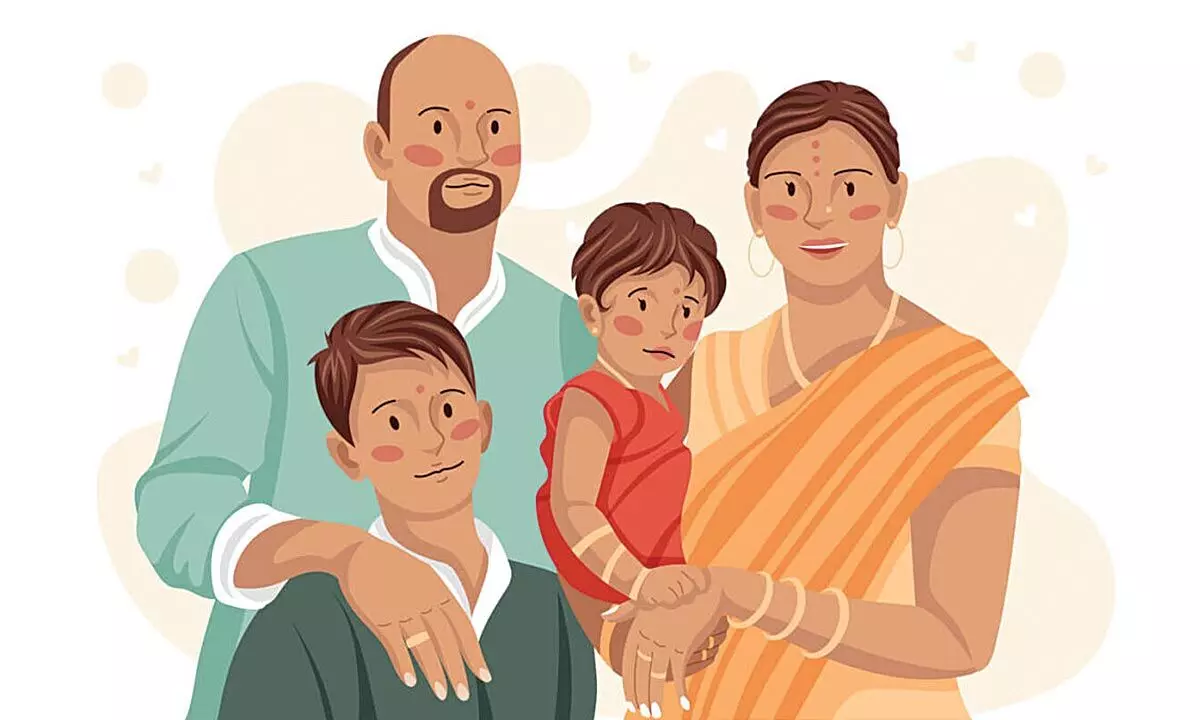The Indian middle class mirage and dilemma
The middle-class population is expected to grow rapidly in the next decade, and by 2027, the size of this group is expected to be larger than that of China, the United States and Europe
image for illustrative purpose

In 1991, after an economic downturn in the markets, the then P.V. Narasimha Rao government began opening up markets with its economic liberalization program. The substantial pace of growth of this class was primarily attributable to the incentivization for private capital investment and opening the economy to foreign investments
Recently, at an event organised by Panchjanya magazine, Finance Minister Nirmala Sitharaman said that she identifies herself as 'middle class', to convey that she understands the pressures and problems they face. Sitharaman also said that the government does not tax income under Rs. five lakh, with no extra taxes being imposed on the 'middle class'; portraying facilities like metros, smart-cities and better drinking water coverage to be middle-class-friendly initiatives.
In 1991, after an economic downturn in the markets, the then P.V. Narasimha Rao government began opening up markets with its economic liberalization program. The substantial pace of growth of this class was primarily attributable to the incentivization for private capital investment and opening the economy to foreign investments. The total number of people in the middle class approximated thirty million in the 1990s, or less than one percent of the population. The percentage of those in the middle class began rising steadily to about five percent of the population in 2004.
During the eight-year period between 2004 and 2012, the middle class doubled in size from 300 million to 600 million. By 2015, the size of the middle class in India was between 300 and 600 million, according to Deutsche Bank Research.
Estimates published by People Research on India’s Consumer Economy (PRICE Research) think-tank, divides income-earning households in India in four categories: Affluent households earning more than Rs. 30 lakh a year; middle-class households earning from Rs. five lakh to Rs. 30 lakh a year; aspiring households earning from Rs. 1.25 lakh to Rs. five lakh annually. Destitute households earn less than below ₹1.25 lakh annually.
The middle-class forms 55% in metros, 52% in boom towns and 43% in niche cities with India's 63 biggest cities being home to a quarter of the country’s middle-class.
The study says that 'Middle India' totals nearly 164 million (16.4 crore) households. 70% of this category lives in rural areas, with many lacking basic amenities such as tap water and stoves. 69% of this category says that they meet their needs "with difficulty" and save 7.7% of household income.
The middle-class population is expected to grow rapidly in the next decade, and by 2027, the size of this group is expected to be larger than that of China, the United States and Europe. According to current projections, India is expected to see a dramatic growth in the middle class, from five to 10 percent of the population in 2005 and 90 per cent in 2039, by which time a billion people will be added to this group.
India is currently the third-largest middle-class market, after China and the United States, and is expected to be the largest in another twelve years. Between 2016 and 2050, the country will continue to grow at a breakneck speed and could add an additional one billion consumers to the global middle class. India is currently the third-largest middle-class market, after China and the United States, and is expected to be the largest in another twelve years. Between 2016 and 2050, the country will continue to grow at a breakneck speed and could add an additional one billion consumers to the global middle class.
The Indian middle class continues to play a significant role, not only in their home country, but also in other parts of the world. The rapid growth of the global software industry, where Indians excel and continue to be in demand, is creating a new, modern, mobile middle class. Furthermore, there is a fluid exchange of personnel between Silicon Valley and the Indian counterpart, Bangalore, hence creating a new global consumer. There is also a significant Indian diaspora in England, as well as Middle Eastern cities like Dubai. Despite promising prospects for the growth of India and its middle class, several problems must be overcome. The country is slated to become the most populous in the world by 2022, according to the UN, and is projected to have a population of 1.8 billion in 2060. Half of India’s current 1.3 billion people are below the age of twenty-six, and by 2020, it is expected to be one of the youngest countries in the world, with a projected median age of twenty-nine. If this population growth occurs, it potentially strengthens a further middle-class expansion, providing the country is properly able to leverage the “demographic dividend” and find adequate employment for the 250 million people, who will be looking for work by 2030.

